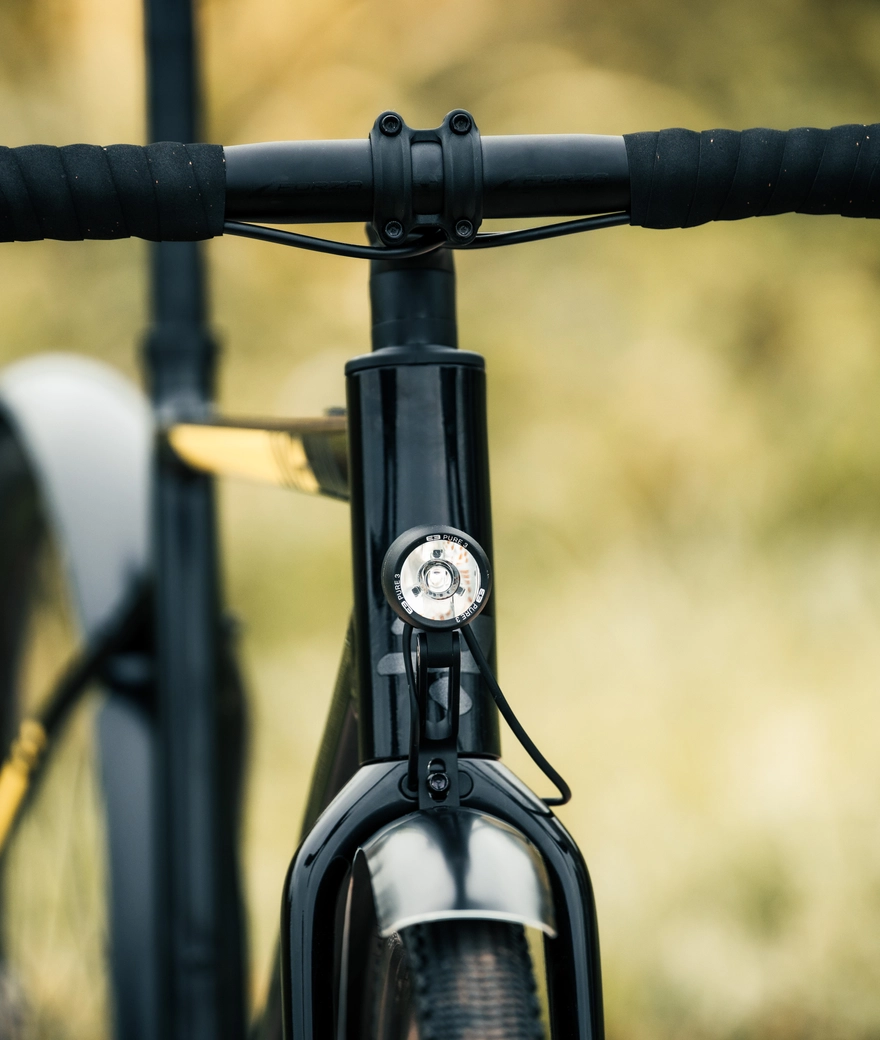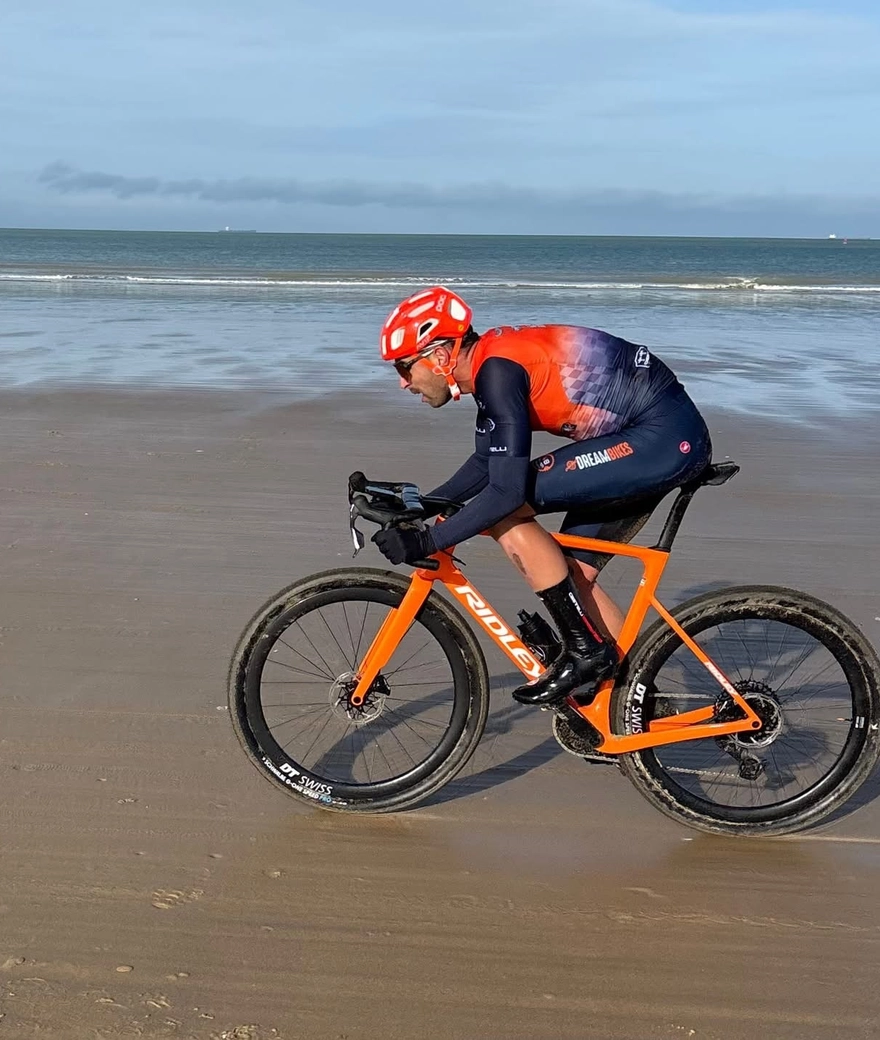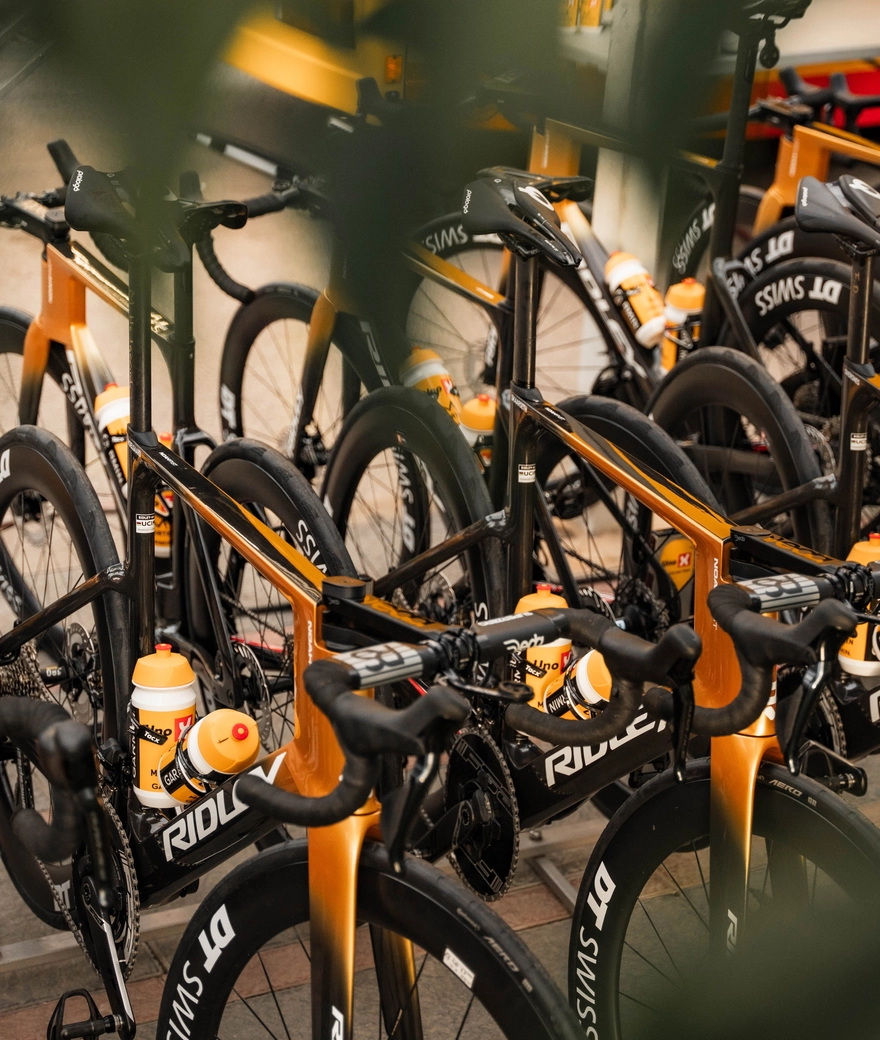Meet the king of racers!
For the latest version of the Helium SLX, the Ridley R&D department wanted to improve rigidity and responsiveness. In the past, this unique stiffness and responsiveness in conjunction with its weight was the secret recipe behind the success of the Helium family. When Cadel Evans asked Ridley engineers for a climbing bike, his main comment was: "Weight should never be at the expense of stiffness."
Our Ridley engineers listened carefully to Evans and found the ideal balance. The riders fell in love with the frame. Every new development in the Helium range was implemented according to the same reasoning: "Stiffness and responsiveness together with weight are the number one consideration. None of the three must be a higher priority than the others.”
It was quickly decided that the down and top tube shape of the Helium SLX would not be modified. A (flattened) circular shape still guarantees the best stiffness-to-weight ratio. If you change the circle, you’ll change the weight or stiffness.
What does this ultimate racer excel in?
Stiffness and responsiveness
Within the proven stiffness-to-weight ratio we even increased the stiffness of the bike, by adding disc brakes with thru-axles. The straight front fork maintains a high level of responsiveness when taking corners. The extra slim seat stays increased the risk of losing responsiveness, but by keeping the calliper brake bridge between the seat stays, it was in fact upgraded.
Weight
This was the big challenge. Despite the switch from calliper to disc brakes, we didn’t want the weight to increase too much. After multiple analyses, we managed to integrate all disc components with a small addition of 50 grams compared to the calliper bikes. Slimming the seat stays further was a crucial factor in achieving this.
Aerodynamics
How do you improve aerodynamics without adding weight? We placed a test model in the wind tunnel and discovered that full cable integration in accordance with our F-Steerer technology would result in the best outcome: -14% in aerodynamics.
Driven by Technology
Since the brand’s inception in 1997, Ridley has invested heavily in Research & Development. This has enabled us to be at the forefront of various innovations such as aerodynamic bikes, the tapered head tube, the use of carbon in bikes, and the emerging European gravel market. Throughout the years, we have also remained true to our technological philosophy: Form Follows Function. Every part of the frame must have an added value. Some aesthetic elements, of course, are permitted – as long as they don’t compromise the bike’s optimal function.
Discover our technologies




